The good.
Seeing Ayers Rock for yourself is incredible. Our rental car carried us into the national park that contains Ayers Rock and Kata Tjuta. Before you even enter the gate, the sight of a giant Ayers Rock greets you. Around 6 pm we claimed a parking spot in the sunset viewing lot. Here, the setting sun shines directly on the side of this massive structure causing it to glow. Unfortunately that day’s cloudy sky inhibited the effect to some degree. Ayers Rock would glow for a few minutes, then diminish as clouds imprisoned the sun’s beams. Each time the sun escaped, the red glow would return until the sun set for the night. We witnessed this phenomenon enough that evening to be enchanted.
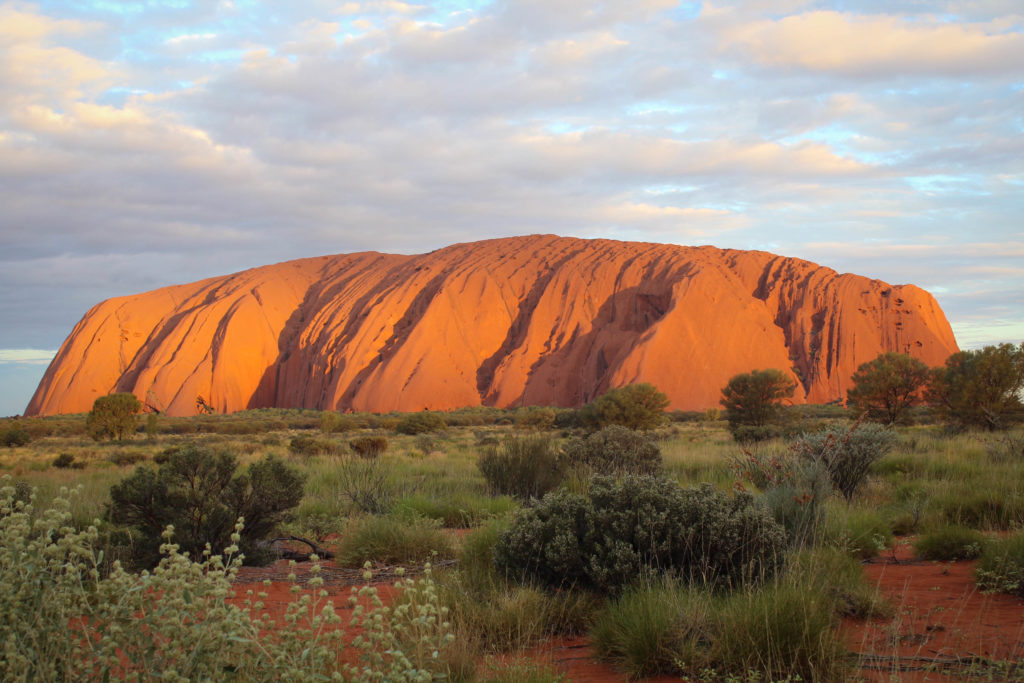
The following morning we awoke around 5am to catch the 6am sunrise. We elected to watch again from the same lot. This allowed us to see Ayers Rock as a silhouette with the sky boasting a beautiful array of colors behind it. While the clouds were unappreciated the night before, they helped create a fantastic sunrise!
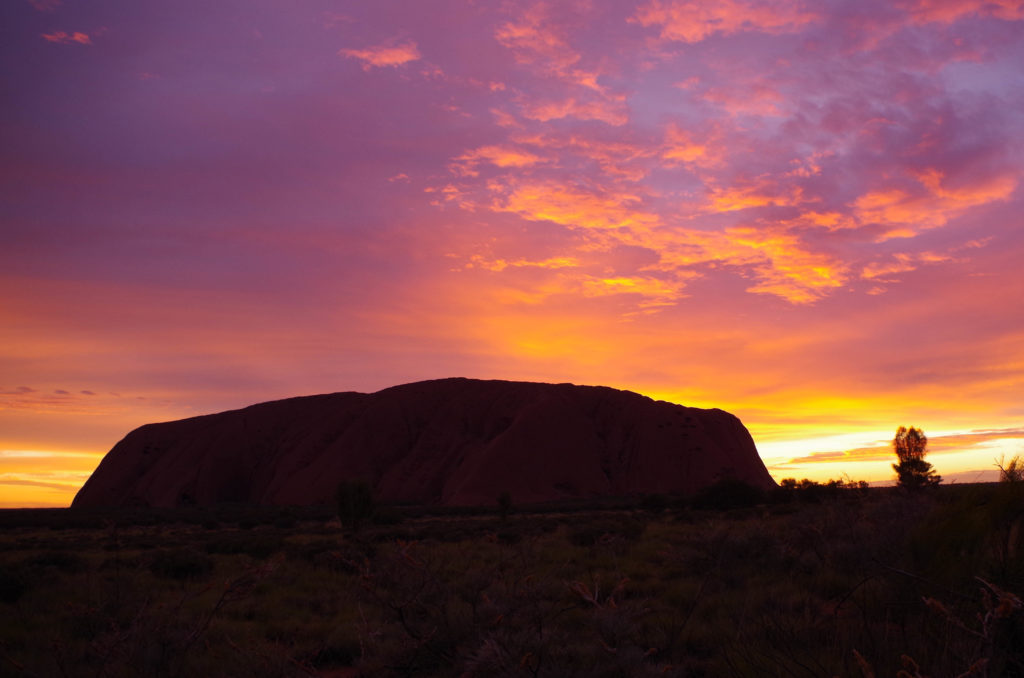
A sunrise viewing lot sits on the other side of this sacred rock from which it should glow in the morning light similar to sunset. Once the sun was up, we drove and wandered around the rest of the park. Hiking trails encircle Ayers Rock and take you close to boulders, caves, and ancient drawings.
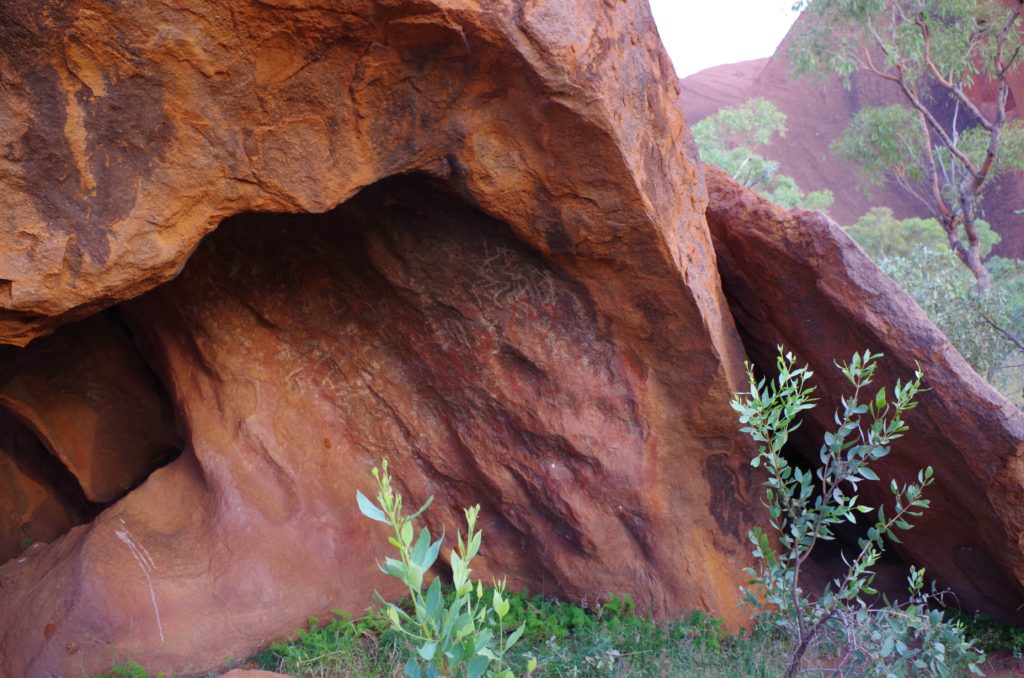
The outback is beautiful. Later that day, we drove hours across the narrow roads of the outback. The scenery fluctuated from simple dark red sand with green shrubs and trees to areas that reminded me of autumn in the Eastern or Midwestern parts of the United States. These fall colors weren’t from changing leaves on trees. Instead, they were along the ground. The orange/red dirt was patterned with yellow and purple flowers as well as shrubs and trees of various greens. We were rewarded with one fantastic wildlife sighting during a stretch break along our drive back. Two quirky cockatoos landed nearby and hung out long enough to make our day.
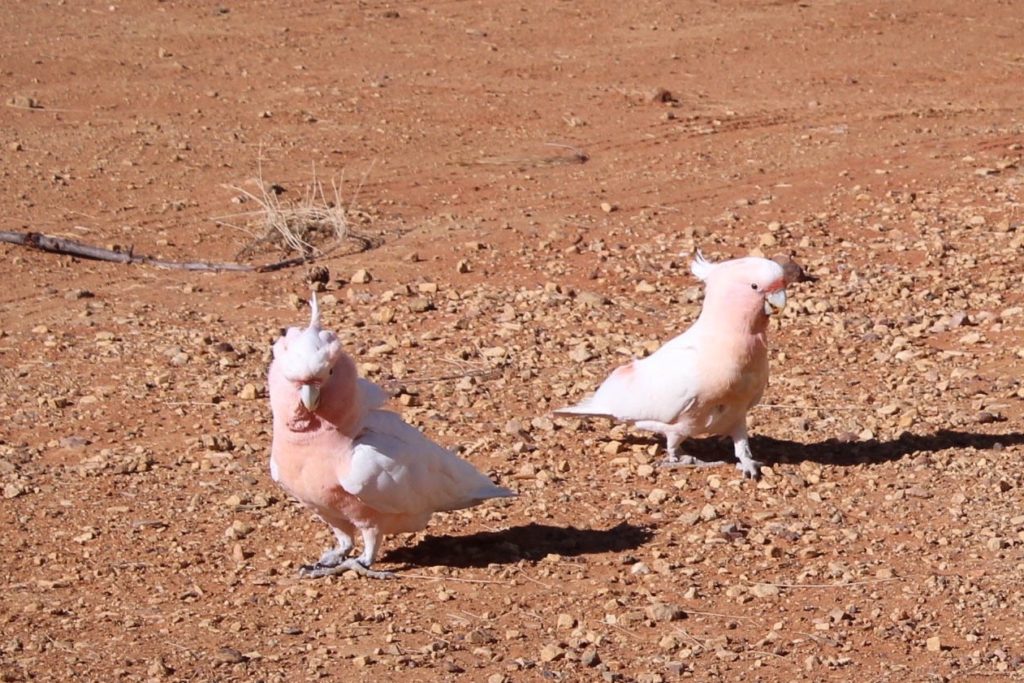
The Bad
Staying in the area is expensive. The only accommodations in the area is Ayers Rock Resort. We checked into the Pioneer Lodge section and went to discover what $265 AUD (about $200 USD) gets you. Turns out it isn’t much. We had a private room containing 2 sets of hard bunk beds with a shower and toilet. While the room felt a bit like a camp dorm, at least it was clean and bug free. The room also came with free wifi… But it was excruciatingly slow. I spent about an hour trying to successfully post an Instagram picture!
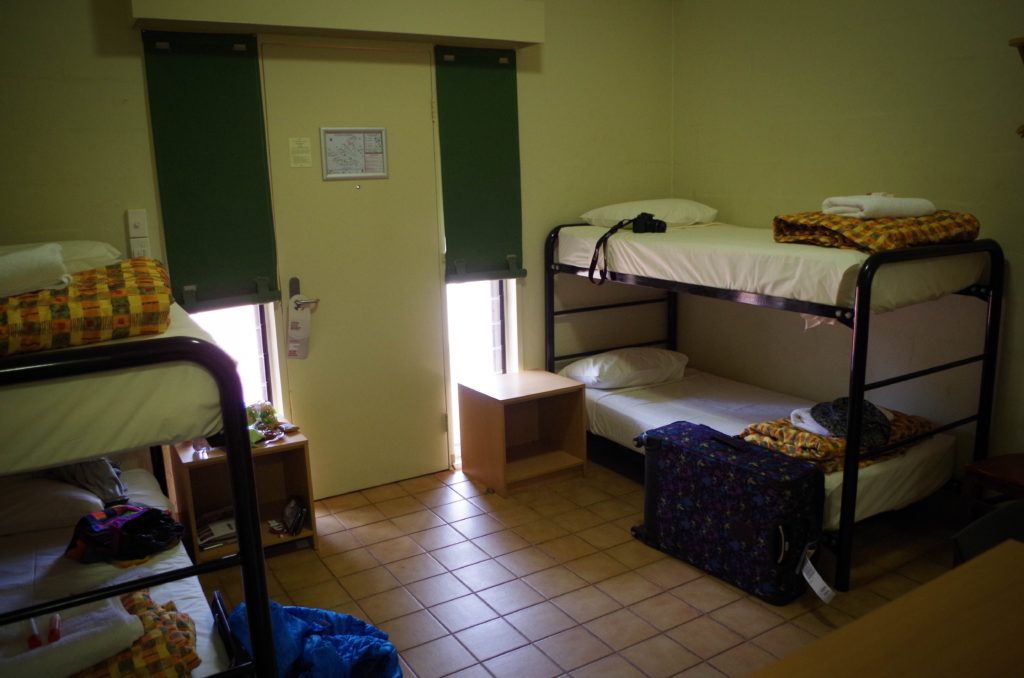
There are both cheaper and more luxurious options available ranging from campsites or dorms to 5 star suites.
To get anywhere, you need to drive on the left side of the road. The resort did offer a transfer to the National Park, but it cost $60-$70 per person. The park is only about 10-15 minutes away, so I found this to be unreasonably steep. We opted to rent a car a day earlier than planned and drive ourselves. The thing about renting a car “down under” is you must drive on the left side of the road. I was a bit freaked out about trying this for my first time. I feared I would instinctively end up on the right (and here, wrong) side. Thankfully, it all went smoothly. I just continually repeated “left, left, left” inside my head.
The indigenous people have been mistreated in the past. Inside the park, we visited the Aboriginal Cultural Center. The Aboriginals are Australia’s native people and those from this area are the Anangu. We learned a bit of their stories about Ayers Rock (known by them as Uluru) and that it and many sites around it are sacred to these people. They believe that at the beginning of time, ancestral beings created this landscape and continue to exist within it. Their culture states that they must guard and protect this land. Inside the cultural center, a video played on repeat. It presents the turmoil between these people and the Australian Government in respect to this site. In the early 1900’s the surrounding area including Uluru and Kata Tjuta was declared an Aboriginal Reserve or sanctuary for these indigenous people. In the 1950’s roads were developed, which increased tourism, and the government excised both Uluru and Kuta Tjuta from the reserve and declared them a national park. To the dismay of the Anangu, tourists climbed the rocks, broke off pieces as souvenirs, and entered sacred sites. It took over 30 years of campaigning before the government returned the deeds of the land to the Anangu people. In 1985 they agreed to a compromise. The Anangu are now leasing the land to Parks Australia for 99 years and they jointly manage the national park. The Anangu can ensure certain sacred areas are off limits to tourists and strongly request that the rocks are not climbed or desecrated. So, this “bad” hIstory becomes a “good” present and future.

The Ugly
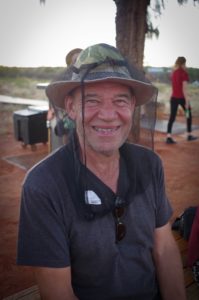 The flies!! The flies were the worst part of the outback by far. They continuously swarmed and landed on your face so you were swatting nonstop. I felt like Pig-Pen from Charlie Brown. Some other travelers wore hats with netting as defense, like this friendly German. I think I’ll pick one up next time I’m in the Outback! Many of the shops sell them, so they shouldn’t be too hard to find.
The flies!! The flies were the worst part of the outback by far. They continuously swarmed and landed on your face so you were swatting nonstop. I felt like Pig-Pen from Charlie Brown. Some other travelers wore hats with netting as defense, like this friendly German. I think I’ll pick one up next time I’m in the Outback! Many of the shops sell them, so they shouldn’t be too hard to find.
Even with the high travel costs and those pesky flies, I am grateful to have had the opportunity to travel to the area around Ayers Rock. The awesome structures that rise out of the sea of red dirt really are unbelievable to behold. And the persistence of the Anangu people is inspiring.
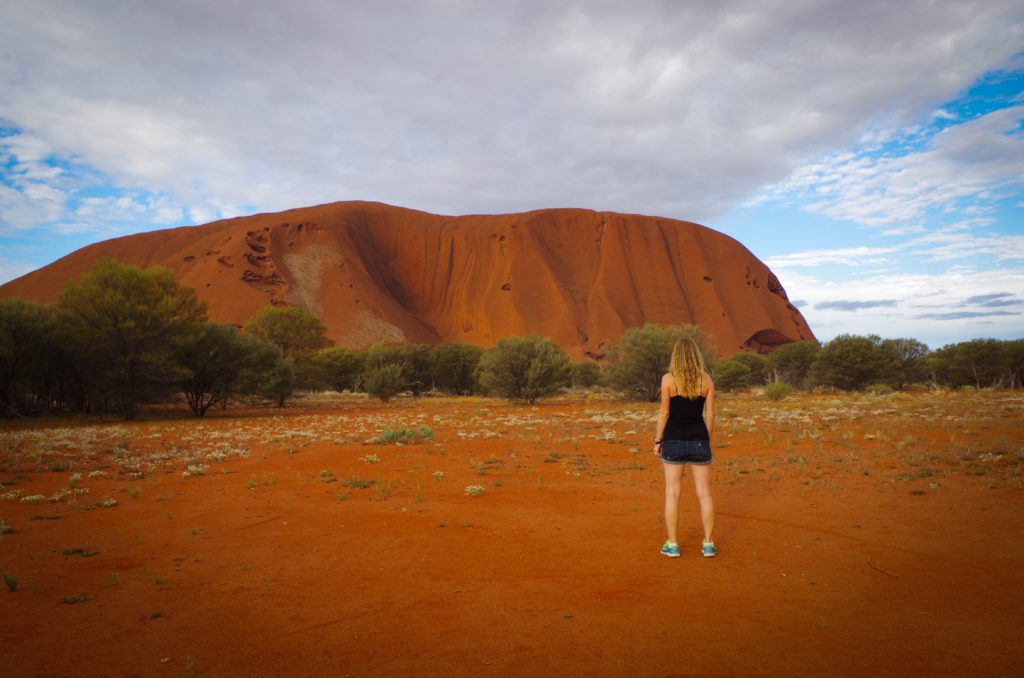
————————————————————————————————————-
This is great! My favorite post so far. Glad to hear the rights of the Aboriginals are being respected… somewhat 🙂